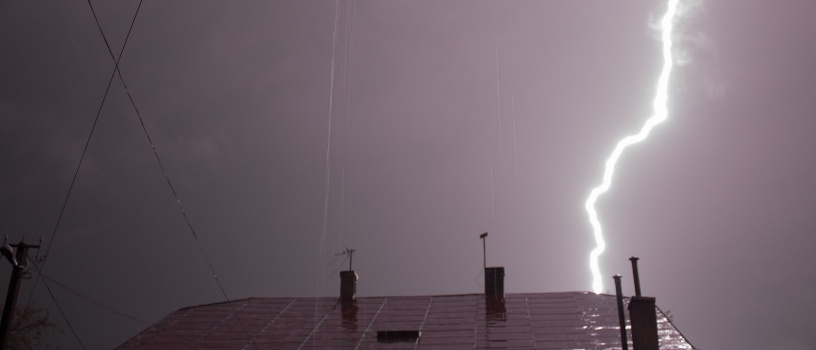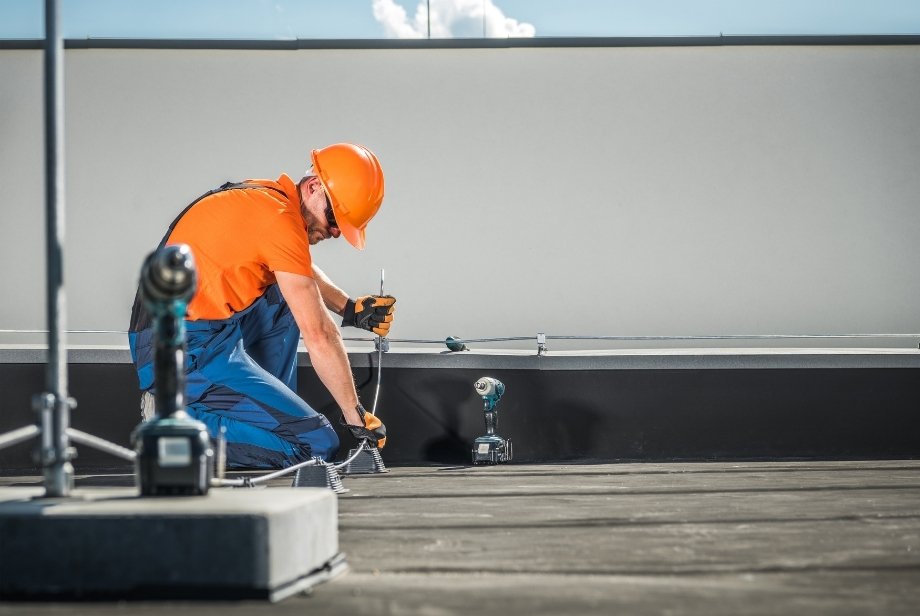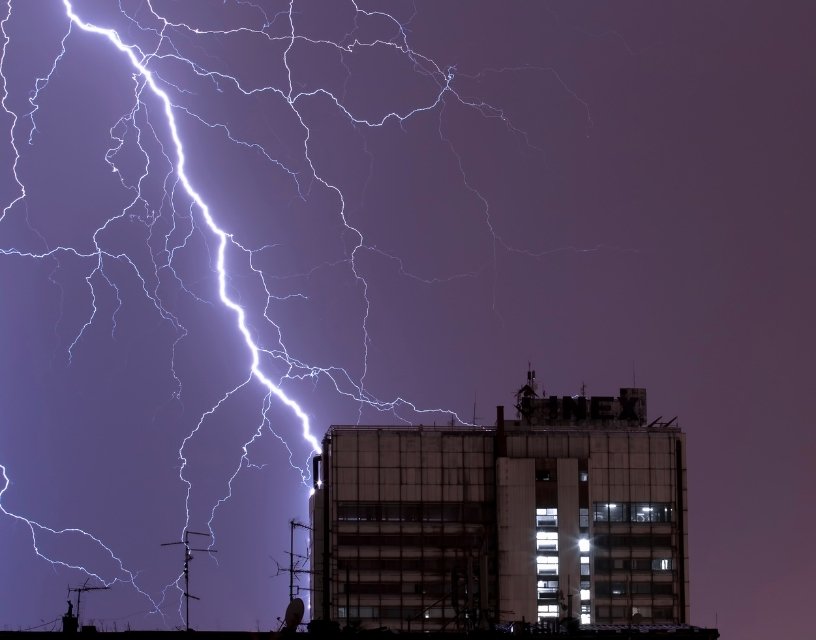
When it comes to protecting your property in Northcote from lightning strike incidents, lightning protection testing isn't just recommended - it's absolutely essential. At Lightning Protection Testing UK, we understand that your lightning protection systems are only as reliable as their last inspection. With the UK experiencing between 200,000 to 300,000 cloud-to-ground lightning strike events every year, ensuring your protection systems work when you need them most could protect you from thousands of pounds in damage.
Lightning strike damage doesn't discriminate. From towering office blocks in London to rural farm buildings in Yorkshire, every structure faces the same fundamental risk. What many property owners don't realise is that modern buildings are actually more vulnerable than ever before. Today's structures contain thousands of sensitive electronic systems, and a single lightning strike can cause cascading electrical failures throughout an entire building.
We've seen the aftermath of lightning strike damage across Northcote. Industrial control systems worth hundreds of thousands of pounds are destroyed in seconds. Data centres brought to their knees. Solar farms and wind turbines suffering catastrophic damage from lightning flashes and potential fire hazards. The cost runs into millions of pounds annually across the country.
The reality is stark: without proper lightning protection services, you're gambling with your property, your equipment, and potentially lives. That's why Lightning Protection Testing UK exists - to give you complete peace of mind through thorough, professional testing and inspection services in Northcote that protect what matters most.


Let's be clear about something important: protection testing isn't optional. Under BS EN 62305 and BS 7430, lightning protection systems must be tested at least once every 12 months. For high risk environments like explosive atmospheres, testing frequency increases to every six months through periodic inspections.
The Electricity at Work Act 1989 and related work regulations place a legal duty of care on employers and building owners. You're legally responsible for ensuring all electrical systems, including lightning protection, remain in safe working condition. This isn't just about ticking boxes - it's about protecting people and property through compliance with relevant British standard requirements.
Read more on “what is BS EN 62305?”
Read more on “is lightning protection a legal requirement?”
Read more on “at what height does a building require lightning protection?”
Read more on “BS EN 62305 vs BS EN IEC 62305 whats the difference?“
Many commercial insurance providers now mandate annual lightning protection services testing as a condition of coverage. We regularly deal with clients in Northcote who've discovered their insurance claims were invalidated because they couldn't prove their systems were properly maintained according to relevant regulations. Don't let this happen to you.
Lightning Protection Testing UK ensures you meet all British Standard requirements and work regulations.Our comprehensive testing and inspection process gives you bulletproof documentation for insurance claims and regulatory compliance.
Not all lightning protection systems inspection procedures are created equal. We test every type of system you'll find across Northcote, from traditional lightning rods installations to modern early streamer emission systems. Each system has its own lightning protection system testing requirements, and we understand them all.
The key lightning protection system components we focus on during testing include air terminals, down conductors, earth electrodes, and bonding connections. Each element plays a crucial role in safely channelling lightning current to ground through the grounding system. If any component fails, the entire system becomes unreliable and cannot protect the structure effectively.
Modern protection systems also incorporate surge protection devices for sensitive electronic systems and electrical installations. We test these components alongside the main lightning protection through our lightning protection inspection process to ensure complete protection for your electrical systems and prevent fire damage.


Our annual testing and inspection program covers everything your lightning protection systems need. We don't cut corners or rush through inspections. Every test is thorough, every measurement is precise, and every result is documented to professional standards.
The lightning protection system testing process starts before we even arrive on site. We review your system documentation, previous test results, and any maintenance history. This preparation ensures we can focus our time on-site where it matters most - actually testing your systems installed across your property.
During each visit, our fully competent engineers conduct visual inspection, continuity testing, earth resistance testing, and surge protection assessment. For those asking how often should lightning protection be tested, we use the latest calibrated test equipment to ensure accurate measurements every time. The full range of tests typically takes several hours, depending on system complexity and installation requirements across the structure.
Regular inspection schedules help identify potential problems before they become dangerous and create risk. We've prevented countless system failures by spotting corroded conductors, damaged lightning rods, and degraded earth electrodes during routine testing and inspection procedures.

At Lightning Protection Testing UK, we provide more than just compliance — we deliver peace of mind.
All our engineers are trained and certified to current British lightning protection standards.
We serve commercial, industrial, and residential properties across the entire UK.
Fast inspections and repairs after storm activity or suspected lightning strikes.
Detailed test certificates and inspection records suitable for insurers and regulatory authorities.
From hospitals and schools to heritage-listed buildings — we’ve done it all.
Earth resistance testing forms the foundation of effective lightning protection. BS EN 62305 recommends that the earth resistance of each down conductor should typically be less than 10 ohms for effective dissipation through the grounding system connected to the ground.
Poor grounding system performance is one of the most common issues we encounter during protection testing. Over time, earth electrodes can corrode, soil conditions change, and resistance levels drift upward. Without regular earthing testing, you won't know when your grounding system stops providing adequate protection for your installed equipment.
Our grounding system testing goes beyond simple resistance measurement. We evaluate electrode placement in the ground, soil conditions, and bonding connections to ensure optimal performance. Where we find high resistance readings in the earth connection, we can recommend cost-effective solutions to restore system effectiveness and maintain safety standards.
The earth system is critical for dispersing electrical discharge safely into the ground. Our testing ensures every earth connection meets the required standards and can handle lightning current effectively without creating additional risk.











Lightning protection testing is the process of inspecting and verifying that a building’s lightning protection system is working safely and effectively.
Lightning protection systems should be tested in the UK at least once every 12 months to comply with British Standard BS EN 62305 regulations.
Lightning protection testing is a legal requirement in the UK for many commercial, public, and high-risk buildings under health and safety and insurance regulations.
Lightning protection testing costs in the UK typically start from £200, but the price depends on the size, complexity, and access of the property.
Lightning protection testing must be carried out by a qualified engineer or technician who is trained and certified to test to BS EN 62305 standards.
If your lightning protection system fails the test, immediate repairs will be recommended to bring it back into compliance with safety and performance standards.